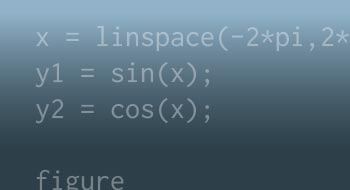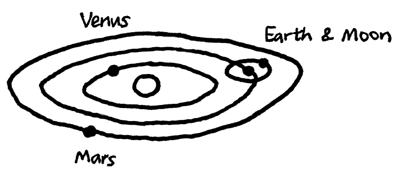String Things
Working with text in MATLAB has evolved over time. Way back, text data was stored in double arrays with an internal flag to denote that it was meant to be text. We then transformed this representation so character arrays were their very own type. And I mentionedearlierthat we introduced astringdatatype to make working with text data more efficient and natural. Let me show you a little more.
Contents
How to Compare Text: the Olden Days
Early on in MATLAB, we used the functionstrcmpto compare strings. A big caveat for many people is thatstrcmpdoes not behave the same way as its C-language counterpart. We then added over time a few more comparison functions:
to allow case-insensitive matches and to constrain the match to at mostncharacters.
Let's do some comparisons now. First on cell arrays of strings...
cellChars = {'Mercury','Venus','Earth','Mars'}
cellChars = 1×4 cell array {'Mercury'} {'Venus'} {'Earth'} {'Mars'}
TF = strcmp('fred',cellChars)
TF = 1×4逻辑array 0 0 0 0
TF = strcmp('Venus',cellChars)
TF = 1×4逻辑array 0 1 0 0
TF = strncmp('Mars', cellChars, 2)
TF = 1×4逻辑array 0 0 0 1
TF = strncmp('Marvelous', cellChars, 2)
TF = 1×4逻辑array 0 0 0 1
TF = strncmp('Marvelous', cellChars, 4)
TF = 1×4逻辑array 0 0 0 0
TF = strcmpi('mars', cellChars)
TF = 1×4逻辑array 0 0 0 1
TF = strcmpi('mar', cellChars)
TF = 1×4逻辑array 0 0 0 0
More Modern, Not Identical Use
We also introducedcategoricalarrays for cases where limiting the set of string choices was appropriate. When usingcategoricalvariables, you may use==for comparisons.
catStr = categorical(cellChars)
catStr = 1×4 categorical array Mercury Venus Earth Mars
TF ='Mars'== catStr
TF = 1×4逻辑array 0 0 0 1
String Comparisons Circa 2020
And now forstringcomparisons.
str = string(cellChars)% or ["Mercury","Venus","Earth","Mars"]
str = 1×4 string array "Mercury" "Venus" "Earth" "Mars"
I can still use thestr*cmp*functions. But we are not restricted to them.
TF = strcmp ('Mars', str)
TF = 1×4逻辑array 0 0 0 1
We can now use==and related operators without worrying about indexing issues that might arise with character arrays.
TF = str ~="Mars"
TF = 1×4逻辑array 1 1 1 0
And most recently, we introduced the functionmatches.
TF = matches(str,"Earth")
TF = 1×4逻辑array 0 0 1 0
It's got some nice features that allow for handling string arrays very nifty. Like looking for planets with an orbit inside Earth.
TF = matches(str,["Mercury","Venus"])
TF = 1×4逻辑array 1 1 0 0
And I can, of course, ignore case, with code that, to me, appears less cryptic.
TF = matches(str,"earth","IgnoreCase",true)
TF = 1×4逻辑array 0 0 1 0
As is true in all of these cases, we can index into the original array with the logical output to extract the relevant item(s).
str(TF)
ans = "Earth"
My Advice: Err on the Side of Code Readability
我还没touched on performance here, but one of the drivers for the recentstringdatatype is efficiency and performance. We've worked hard to overlay that with functions that make your code highly readable. This makes code maintenance and code transfer go much more smoothly. I tend to favor this over eking out the last fractional second of speed. In the case of strings, you may not even need to make that tradeoff.
String Adoption
Have you seen enough evidence that string are the future for working with textual data in MATLAB? Tell us what you thinkhere.
- Category:
- New Feature,
- Strings














 Cleve’s Corner: Cleve Moler on Mathematics and Computing
Cleve’s Corner: Cleve Moler on Mathematics and Computing Loren on the Art of MATLAB
Loren on the Art of MATLAB Steve on Image Processing with MATLAB
Steve on Image Processing with MATLAB Guy on Simulink
Guy on Simulink Deep Learning
Deep Learning Developer Zone
Developer Zone Stuart’s MATLAB Videos
Stuart’s MATLAB Videos Behind the Headlines
Behind the Headlines File Exchange Pick of the Week
File Exchange Pick of the Week Hans on IoT
Hans on IoT Student Lounge
Student Lounge Startups, Accelerators, & Entrepreneurs
Startups, Accelerators, & Entrepreneurs MATLAB Community
MATLAB Community MATLAB ユーザーコミュニティー
MATLAB ユーザーコミュニティー





Comments
To leave a comment, please clickhereto sign in to your MathWorks Account or create a new one.